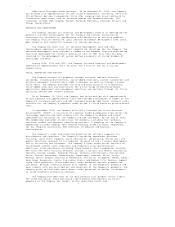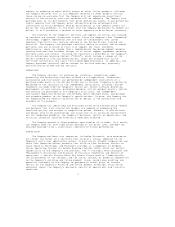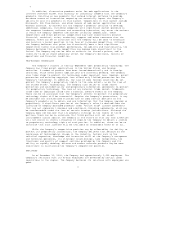Citrix 2000 Annual Report Download - page 19
Download and view the complete annual report
Please find page 19 of the 2000 Citrix annual report below. You can navigate through the pages in the report by either clicking on the pages listed below, or by using the keyword search tool below to find specific information within the annual report. 17
Company's cost of revenues exclude amortization of core technology. Cost of
revenues also consists of compensation and other personnel−related costs for
consulting services.
Gross Margin. The decrease in gross margin as a percent of net revenues
from 1999 to 2000 was primarily due to reserves for obsolete inventory on hand
and the impact of the consulting services business which has a lower gross
profit margin as a percentage of net revenue than that associated with the sale
of software licenses. The inventory reserved for obsolescence was destroyed in
2000. This decrease was slightly offset by an increase in sales of electronic
licenses, which have a higher gross margin versus traditional packaged product
as a percentage of product revenue. The Company anticipates gross margin as a
percentage of net revenues will increase from current levels but will remain
below historical levels as the Company increases its consulting services
offering.
The increase in gross margin as a percent of net revenues from 1998 to 1999
was primarily due to increases in sales of the MetaFrame product and related
user licenses. The MetaFrame products have a relatively high gross margin
contribution as the MetaFrame products bear less royalties than those associated
with the WinFrame products. Gross margin related to the Development Agreement
increased from 1998 to 1999 due primarily to an increase in revenue related to
the Development Agreement as well as a decrease in related engineering and
support expenses which resulted from the maturity level of the MetaFrame
product. The overall increase in gross margin as a percentage of net revenues
for 1999 was partially offset by an increase in inventory reserves.
Research and Development Expenses. Research and development expenses
consisted primarily of personnel−related costs. All development costs included
in the research and development of software products and enhancements to
existing products have been expensed as incurred except for certain intangible
assets related to the acquisitions and licensed technology described herein.
Increases in research and development expenses in 2000 and 1999 resulted
primarily from additional staffing, associated salaries and related expenses
required to expand and enhance the Company's product lines.
Sales, Marketing and Support Expenses. The increase in sales, marketing
and support expenses in 2000 and 1999 resulted primarily from increased
headcount levels of sales, services and marketing staff and associated salaries,
commissions and expenses in order to increase the Company's sales, consulting
and marketing efforts. The increase was also due to higher levels of promotional
activities and marketing programs directed at customer and business partner
acquisition and retention, and additional advertising activities related to
specific product lines and corporate branding. Promotional activities include
various demand generation programs as well as direct mail campaigns, programs
directed at resellers and trade shows.
General and Administrative Expenses. Increases in general and
administrative expenses in 2000 and 1999 resulted primarily from increased
staff, associated salaries and related expenses necessary to support overall
increases in the scope of the Company's operations. The increase in 2000 was
also due to an increase in legal fees relating to litigation and general
corporate matters.
Amortization of Intangible Assets. The increases in amortization of
goodwill and identifiable intangible assets in 2000 and 1999 are primarily due
to the acquisition of APM Ltd. in June 1998, VDOnet Corporation Ltd. in July
1998, and ViewSoft, Inc. in July 1999. These acquisitions resulted in additional
goodwill and identifiable intangible assets of approximately $30.5 million, $5.6
million and $31.1 million, respectively, at their respective date of
acquisition. Additionally, for 2000, the increase was also due to the
acquisition of Innovex in February 2000 which resulted in additional goodwill
and identifiable intangible assets of approximately $26.7 million. As of
December 31, 2000, the Company had net goodwill and identifiable intangible
assets of $43.3 million, associated with these transactions, remaining to be
amortized over three to four years following the acquisitions. The Company
anticipates that amortization of goodwill and identifiable intangible assets
will decrease from 2000 levels due to the write−downs of core technology
recorded in the fourth quarter of 2000 (see further discussion under
"−− Write−Down of Technology.")
In−Process Research and Development. In 1999, the Company completed the
acquisition of certain in−process software technologies from ViewSoft, in which
it allocated $2.3 million of the purchase price to IPR&D. During 1998, the
Company completed acquisitions and a licensing of certain in−process software
17
























